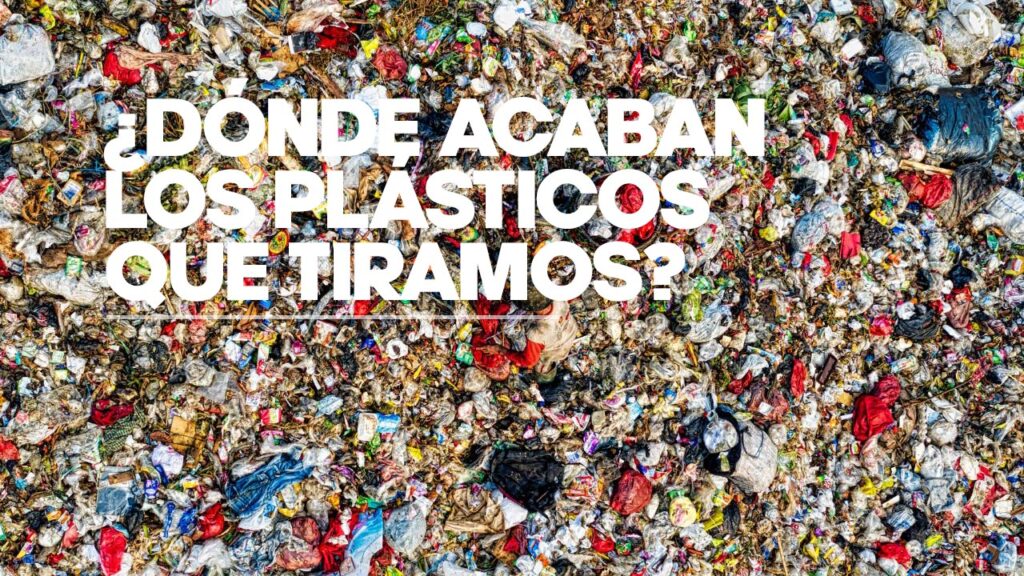The consumer society we’ve created, especially the “use and throw away” mentality, is leading us toward a significant environmental problem. One of the biggest challenges we face is the amount of waste we generate, specifically plastic. In fact, in the last ten years, we have produced more plastic than in the entire 20th century. And, as a typical consumer society, 50% of the plastic products and packaging we use will only have a single use before ending up in a landfill—or worse, as we’ll see shortly. Only a small portion of plastic is recycled and doesn’t contribute to the problem. So, imagine how much plastic waste is still on our planet after nearly a century of plastic production.
With this brief introduction, you’re probably eager to know: where does the plastic go once it’s used? Excluding the small fraction that gets recycled (which is less than 10% of all plastic produced annually), it’s important to start using less plastic—and when we do use it, we should focus on reusing or recycling.
The world consumes over a million plastic bags every minute. On average, each person generates about 200 kg of plastic waste per year, depending on the country or development area. As you can see, this is a staggering amount, and soon, the planet won’t be able to handle this level of waste. Luckily, every day, more people are becoming aware, and recycling and responsible consumption are slowly on the rise.
Of all the plastic waste generated, the average person uses about 500 plastic bags a year, and plastic bags are just a small part of the problem. Every year, we throw away 35 billion plastic bottles—roughly 1,500 plastic bottles every second! To help visualize how much plastic is consumed per second in the U.S., 1,500 water bottles were hung up on Governor’s Island in New York.
Now, where does most of the plastic that isn’t recycled go? It gets incinerated or ends up in a landfill for centuries. But sadly, a large portion of it ends up in the ocean—the world’s largest natural landfill! Plastic accounts for about 90% of the debris floating in the ocean, and it is estimated that 46,000 pieces of plastic float in each square kilometer of ocean. That’s enough to cover 40% of the ocean’s surface.
Imagine sailing in the middle of the ocean and not being able to see the clear water we’re often promised in paradise-like locations. Instead, you’d be surrounded by plastic, which covers nearly half of our maritime surface.
The ocean, in its own way, fights back against all the trash, occasionally returning it to shore, creating even more waste and damaging the coastline. Some plastics, the ones that have been in the water the longest, break down into tiny pieces that will take years to decompose, making them a part of our lives for generations. On some of the world’s beaches, the first five centimeters of sand are covered in plastic fragments.
Another significant problem with plastic is that it often mixes with organic matter and other waste in the ocean, forming curious “rocks” made of plastic, trash, and organic debris. In the future, when these fragments are studied, the age of plastic will be a reminder of our waste.
For humans, it may just be an eyesore, but for thousands of animals, it can be a deadly trap from which they can’t escape. Over a million birds and more than 100,000 marine mammals suffer the consequences of this harmful waste, often leading to death. Studies show that 47% of seabirds and 22% of whales found on beaches have plastic fragments in their digestive systems or elsewhere in their bodies, impairing their mobility.
JOIN THE CHANGE: WHAT CAN WE DO?
Each of us has the power to change—at least by joining the movement. The more of us there are, the easier it will be. The first step is to avoid the indiscriminate use of plastic, especially when shopping at supermarkets. Try to avoid products with excessive packaging, as these generate double the waste and pollution. Instead, aim to buy in bulk, and if it’s unavoidable, use containers made from #1 (PET) or #2 (HDPE) plastic, as they are easier to recycle.
Credits: ideasverdes.es
https://www.ideasverdes.es/donde-acaba-el-plastico-que-tiramos/?fbclid=IwAR0wwtKPQi1Y1OizQvjxl1ExTUMbhqZeM68EhJzRkZJWn7E5c8pd4_purtI

